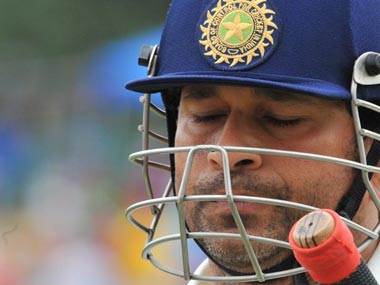In some corners of the BCCI, questions about Sachin Tendulkar are doing the rounds constantly. And no, the questions are not about his form – rather they centre around the ’economic’ aspect of things.
What will happen to the valuation of Indian cricket if Sachin Tendulkar does decide to retire? Would people stop watching TV? Would we stop watching cricket? Would sponsors be prepared to pay as much if Sachin Tendulkar is not around?
The fear for many officials is real. Senior sports writer Ayaz Memon feels that Sachin Tendulkar has long transcended the sport. Don Bradman attracted crowds, wherever he went. So does Tendulkar. In England and Australia, he didn’t score runs, but they cheered him on regardless. He is no longer judged. The appreciation comes easily.
“But the whole valuation game is now based on television rights now. It doesn’t matter if there are 25-30,000 spectators in the stadium or not, but you just need to have the 1 billions eyeballs that India boasts off and Tendulkar’s absence will cause a dent in that for the short term,” said Ayaz.
“Currently, India provides 70 to 75 per cent of the viewers for the international game, and due to that 70 to 75 per cent of the revenue. And that’s where the strength of Indian cricket comes from. And Tendulkar, whether we admit it or not, is the lodestar. He has been for the last 10-15 years.”
As a cricketer Tendulkar is not necessarily in trouble right now. He is the mascot of Indian cricket – not just Indian cricket, he is the pied piper of the sport.
Indeed, when you talk about the economics of Indian cricket – you have to mention Sachin Tendulkar. The one deal he signed with WorldTel for 18 crores in 1995 did great things for Indian cricket – he not only scored runs but the cricketing world grew around him.
“There’s been a shift in the way in which Indian cricket is run and the way players conduct themselves. Indian cricket, in a sense, went professional post-1983. But things really changed after Tendulkar’s debut. I think when Sachin started playing the match fees was Rs 10,000. His first sponsorship was with SunGrace Mafatlal for Rs 2 lakhs in 1990. In 1995, he signed the 18 crore deal with World Tel and five years later, the deal was renewed for Rs 90 crore. So obviously, he was the big star and everyone chased him. But his growth wasn’t standalone – it showed the depth and the growth of the Indian economy as well.”
Watch the entire discussion between Sports Editor Ashish Magotra and Senior sports writer Ayaz Memon above.
)
)
)
)
)